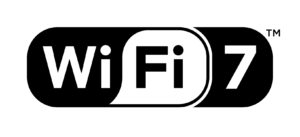Financially Driven Cybercrime Continues to Be
Financially Driven Cybercrime: The Leading Cybersecurit...

As the digital landscape continues to evolve, the demand for faster, more reliable wireless connectivity has never been greater. Enter Wi-Fi 7, the next generation of wireless technology that promises to revolutionize how we connect to the internet. With its advanced features and capabilities, Wi-Fi 7 is set to enhance user experiences across various applications, from smart homes to enterprise environments. This article delves into the intricacies of Wi-Fi 7, exploring its key features, benefits, potential use cases, and the future of wireless connectivity.
Wi-Fi 7, also known as IEEE 802.11be, is the upcoming standard in wireless networking, following Wi-Fi 6 (802.11ax). It is designed to provide ultra-fast speeds, increased capacity, and improved performance in dense environments. Wi-Fi 7 is expected to be finalized in 2024, but its development is already generating significant interest in the tech community.
Wi-Fi 7 introduces several groundbreaking features that set it apart from its predecessors:
The introduction of Wi-Fi 7 brings a host of benefits that cater to the growing demands of users and businesses alike:
Wi-Fi 7 is poised to transform various sectors by enabling new applications and enhancing existing ones. Here are some potential use cases:
As smart home devices proliferate, the need for robust wireless connectivity becomes paramount. Wi-Fi 7 can support numerous devices simultaneously, ensuring that everything from smart thermostats to security cameras operates seamlessly.
AR and VR applications require high bandwidth and low latency for optimal performance. Wi-Fi 7’s ultra-fast speeds and reduced latency make it an ideal choice for immersive experiences in gaming, training, and education.
In corporate settings, Wi-Fi 7 can enhance productivity by providing reliable connectivity for a multitude of devices. This is particularly beneficial in industries such as healthcare, where real-time data access is critical.
Stadiums, airports, and other public venues often struggle with network congestion. Wi-Fi 7’s increased capacity and performance in crowded areas can significantly improve the user experience for visitors.
The IoT ecosystem is expanding rapidly, with billions of devices expected to be connected in the coming years. Wi-Fi 7’s ability to handle a high number of simultaneous connections makes it well-suited for IoT applications.
To appreciate the advancements of Wi-Fi 7, it’s essential to compare it with its predecessors:
While Wi-Fi 7 offers numerous advantages, there are challenges and considerations that stakeholders must address: